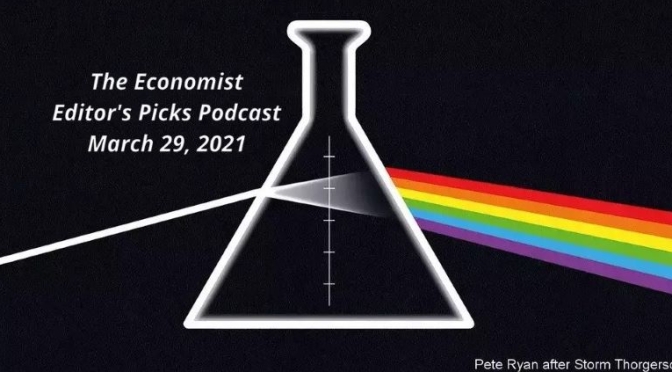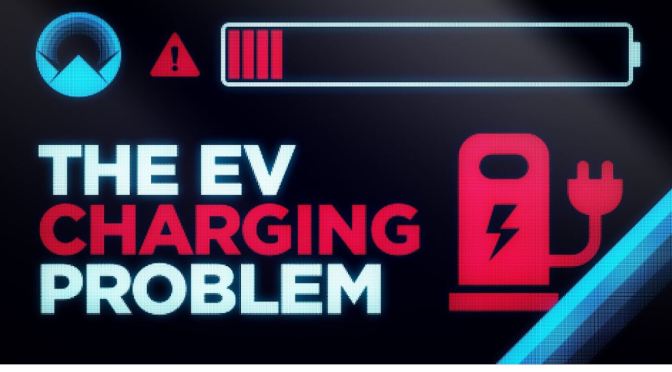While Tesla and others already offer assisted-driving features, startups Waymo, Cruise, TuSimple and Aurora are betting their autonomous vehicles will make driving a thing of the past. WSJ asked them about safety and other challenges they face. Photo composite: George Downs
Tag Archives: Tesla
Morning News Podcast: Israel-Hamas Fighting, Pipeline Restarts, Bitcoin
A.M. Edition for May 13. WSJ’s Felicia Schwartz discusses what is behind the fighting unfolding in Israel. The Colonial Pipeline restarts operations after a cyberattack.
WSJ’s Caitlin Ostroff has more on Tesla’s decision to suspend bitcoin payments. Marc Stewart hosts.
Analysis: Recycling ‘End-Of-Life EV Batteries’ (CNBC)
Lithium-ion batteries are everywhere — in phones, laptops, tablets, cameras and increasingly cars. Demand for lithium-ion batteries has risen sharply in the past five years and is expected to grow from a $44.2 billion market in 2020 to a $94.4 billion market by 2025, mostly due to the boom in electric cars.
And a shortage of lithium-ion batteries is looming in the U.S. Former Tesla CTO and Elon Musk’s right-hand man, JB Straubel, started Redwood Materials in 2017 to help address the need for more raw materials and to solve the problem of e-waste. The company recycles end-of-life batteries and then supplies battery makers and auto companies with materials in short supply as EV production surges around the world. Straubel gave CNBC an inside look at its first recycling facility in Carson City, Nevada. Watch the video to learn why battery recycling will be an essential part in making EV production more sustainable.
Analysis: Electric Car Startups Vs. Tesla (Video)
Lucid, Fisker, Rivian and Canoo are among the well-funded startups racing to release new electric vehicles. WSJ asked CEOs and industry insiders how new auto companies plan to challenge Tesla’s market dominance and take on legacy car makers. Photo composite: George Downs
Analysis: Why Mercedes-Benz Is No Longer An ‘Aspirational Brand’
Mercedes-Benz is perhaps the biggest name in luxury cars globally, and for countless buyers around the world, it is a car brand to aspire to own. The German automaker has a reputation for superb build quality, excellent engineering, and the bragging rights that its founder Carl Benz invented the first production automobile.
Today, Mercedes-Benz faces a new class of challenges as Tesla has become the aspirational brand for younger consumers. There is a slew of other EV hopefuls vying for the next generation’s aspirational vehicle’s mantle. Automakers have had to sink billions into new technologies and contend with a new crop of competitors in the critical Chinese market and around the world.
World News: Science After Covid, Rwanda & VW Chases Tesla (Podcast)
A selection of three essential articles read aloud from the latest issue of The Economist. This week: science after the pandemic, Rwanda: paragon or prison? (9:10) And Herbie goes electric (33:55)
Analysis: Why China Is Dominating The U.S. In Electric Cars (Video)
The global electric vehicle market is heating up and China wants to dominate. The country has invested at least $60 billion to support the EV industry and it’s pushing an ambitious plan to transition to all electric or hybrid cars by 2035. Tesla entered the Chinese market in 2019 and has seen rapid growth.
China sold roughly one million more EVs than the U.S. in 2020. But there are signs the U.S. is getting more serious about going electric. President Joe Biden announced a goal to reach net-zero emissions by 2050 and investments in green infrastructure. Watch the video to find out how China came to dominate the market and whether it’s too late for the U.S. to catch up.
Analysis: Is Texas Now The New California? (Video)
Tesla’s gigafactory and Apple’s second-largest campus aren’t the only big businesses coming to Texas. From Oracle to Hewlett Packard Enterprise, Elon Musk to Joe Rogan, Texas has lured an increasing number of big businesses and billionaires away from California since the pandemic began. While California’s population and job growth both slowed to a trickle, Texas added more residents than any other state in 2020. CNBC talks to those moving and longtime Texans about the reasons behind the trend and what it could mean for the future of the Lone Star State.
Electric Cars: ‘Can Tesla Succeed In India’ (Video)
As Tesla looks to expand to new markets, rumors are circulating that India could be next. While the 5th largest auto market could be big for the ev manufacturer, it’s filled with challenges and increasing competition.
There is an electric vehicle revolution sweeping the world, but India is lagging behind. Elon Musk has said that Tesla will enter India this year, but it’s not clear if that will actually happen. On January 8th, Tesla took its first step towards launching in the country, registering Tesla Motors India and Energy Private Limited in Bengaluru.
But when Tesla does eventually come to India, it won’t be easy. The electric vehicle industry is in its infant stages there, lacking much of the infrastructure needed for widespread adoption. And the most popular vehicles are motorcycles, rickshaws and budget passenger cars. Watch the video to find out what Tesla will be up against in India.
Electric Vehicles: ‘The EV Charging Problem’ (Video)
A Tesla Supercharger is a 480-volt direct currentfast-charging technology built by American vehicle manufacturer Tesla, Inc. for their all-electric cars. The Supercharger network was introduced on September 24, 2012 with six Supercharger stations.[1] As of December 31, 2020, Tesla operates over 23,277 Superchargers in over 2,564 stations worldwide[2] (an average of 9 chargers per station). There are 1,101 stations in North America, 592 in Europe, and 498 in the Asia/Pacific region.[3] Supercharger stalls have a connector to supply electrical power at maximums of 72 kW, 150 kW or 250 kW.[4]
The original V1 and V2 Tesla supercharging stations charge with up to 150 kW of power distributed between two cars with a maximum of 150[21][22] kW per car, depending on the version.[23][14][24] They take about 20 minutes to charge to 50%, 40 minutes to charge to 80%, and 75 minutes to 100% on the original 85 kWh Model S. The charging stations provide high-power direct-current (DC) charging power directly to the battery, bypassing the internal charging power supply.[25]
In September 2017, Tesla announced the availability of urban Superchargers. The urban Superchargers are more compact than the standard Supercharger stalls, and will be primarily deployed in urban areas such as mall parking lots and garages. Compared to the standard Superchargers, urban Superchargers have a maximum power delivery of 72 kW. Instead of 150 kW distributed between two vehicles at a Supercharger A/B stall pair, each Urban Supercharger stall provides dedicated 72 kW capacity.[26]
A few of the Tesla supercharging stations use solar panels to offset energy use and provide shade.[27] Tesla plans to install additional solar power generation at Superchargers.










